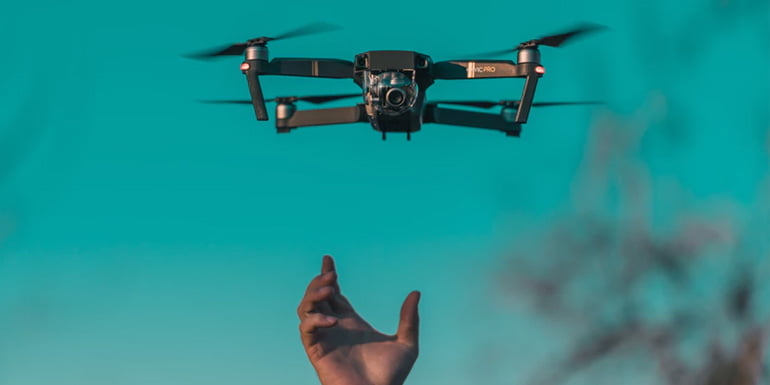If you’re planning to fly a drone over my head, then you should probably need to get a license for that. Well, was kidding on the first part, but on the second, you will now need a legal license to fly a drone. India Government has officially announced its drone policy, opening up an immense opportunity for commercial use of drones.
The Union Minister of Civil Aviation Shri Suresh Prabhu officially announced the Drone Regulations 1.0. The policy and regulation will enable the safe and most importantly commercial usage of drones in India. The regulation will come into effect in the country on 1st December 2018.
The government has formulated an all-digital process for registering and operating drones in India. The Digital Sky Platform, as Indian government calls it would the first-of-its-kind national unmanned traffic management (UTM) platform. It implements “no permission, no takeoff” (NPNT). It operates as a traffic regulator in the drone airspace. It coordinates closely with the defence and civilian air traffic controllers (ATCs) to ensure that drones remain on the approved flight paths.

Thus, essentially, you would be required to do a one-time registration of your drones, pilots and owners. For every flight (exempted for the nano category), you will be required to ask for permission to fly on a mobile app. An automated process then permits or denies the request instantly. To prevent unauthorized flights and to ensure public safety, any drone without a digital permit to fly will simply not be able to take off.
Other key features of Drone Regulations 1.0
- Drones or Remotely Piloted Aircraft System (RPAS) are categorized into 5 based weight, namely nano, micro, small, medium and large.
- All RPAS except nano and those owned by NTRO, ARC and Central Intelligence Agencies are to be registered and issued with Unique Identification Number (UIN).
- Unmanned Aircraft Operator Permit (UAOP) shall be required for RPA operators except for nano RPAS operating below 50 ft., micro RPAS operating below 200 ft., and those owned by NTRO, ARC and Central Intelligence Agencies.
- RPAS can operate within visual line of sight (VLoS), during daytime only, and up to maximum400 ft. altitude.
- For flying in controlled Airspace, filing of flight plan and obtaining Air Defence Clearance (ADC) /Flight Information Centre (FIC) number shall be necessary.
- No Drone Zones – where you shouldn’t try to fly drones. Like around airports, near the international border, Vijay Chowk in Delhi, State Secretariat Complex in State Capitals, strategic locations/vital and military installations etc.
- RPAS operations will be based on NPNT enabled through Digital Sky Platform.
- There will be different colour zones visible to the applicant while applying in the digital sky platform. This includes
- Red Zone: flying not permitted
- Yellow Zone (controlled airspace): permission required before flying
- Green Zone (uncontrolled airspace): automatic permission.
- In case of violation of regulatory provisions,
- there would be suspension/ cancellation of UIN/ UAOP,
- legal actions as per relevant Sections of the Aircraft Act 1934, or Aircraft Rule.
- penalties as per applicable IPCs
“Our progressive regulations will encourage a vast Made in India drone industry,” said Shri Suresh Prabhu.
“These regulations firmly place us among the global leaders. Our policy roadmap will certainly provide a strong impetus to all players in the drone ecosystem. We hope that these initiatives will enable us to create a vibrant new industry,” said Minister of State Shri Jayant Sinha.


